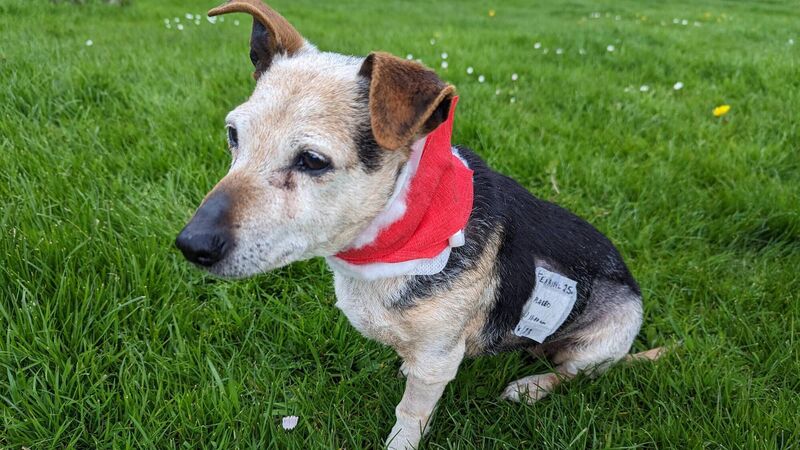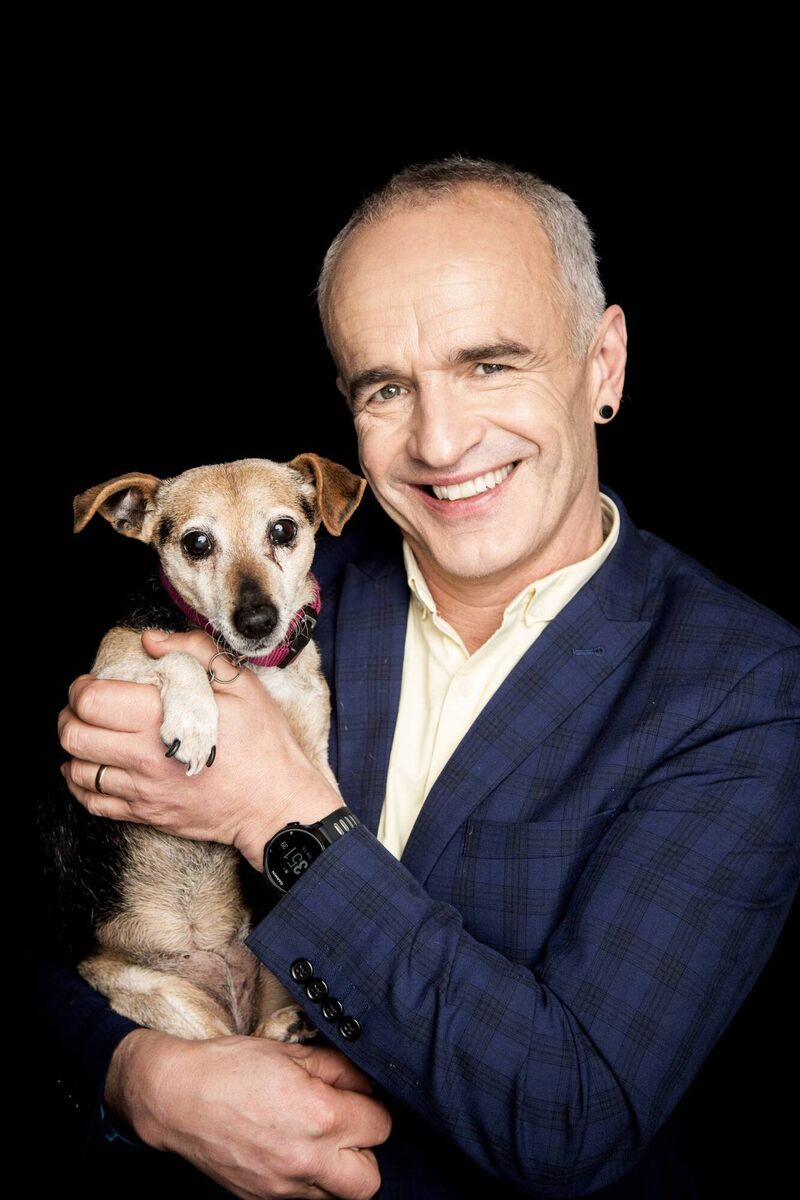Pete the Vet: My little dog Kiko was very sick - she's 13 years old but I want her to live to 23

Pete the Vet's little terrier Kiko wih her feeding tube.
When my own little terrier, Kiko, fell seriously ill last week, I shifted roles from my usual persona of the “reassuring vet” to the opposite side of the consulting table, as a “worried owner”.
The saga of her illness gave me a different perspective to my usual viewpoint. I learned some useful reminders about what it’s like being the owner of an unwell animal.
Kiko is thirteen and a half years old, already suffering from some of the signs of old age. The fur on her face is grizzled grey, she’s stone deaf, and she’s started barking in the early hours of the morning, a common sign of early doggy dementia. She’s still enjoys a walk every morning, but I was aware that the years were passing. Most dogs have a life span of twelve to sixteen years and she was in that zone.
The first sign of her being unwell was simple: she regurgitated her breakfast. My first response to this was “This is common and harmless. Many dogs vomit from time to time”. But my brain also said: “Kiko never brings up her meals: I don’t like this”. Still, she was bright and cheerful, so there was no immediate need for action.
The next morning, she refused to touch her breakfast. This was seriously bad news. Kiko loves her food. “No interest in food” is a helpful guide to the severity of a pet’s illness: if any animal turns their nose away from ultra-tasty food for more than 24 hours, they urgently need to see the vet.
Onlookers might classify Kiko as an old dog, close to the end: why do anything other than make that ending smooth and peaceful for her? It’s very different when you are closely involved. Kiko is my friend and a family member in our home: the thought of losing her was not something that any of us want to contemplate.
I’ve learned that it’s best not to use age as a reason for making decisions about a dog’s future. I will never forget a cross-bred dog called Benji, who was badly injured after being hit by a car at the age of seventeen. The only way he could be saved was to amputate his back right leg. When I explained this to his owners, I fully expected them to request euthanasia.
But instead, they insisted that I carry out the operation. Benji made a full recovery, and lived to the age of twenty-three, running around happily on three legs.
Kiko’s quality of life was very good, but what was the cause of her illness? If she had a terminal, untreatable condition, euthanasia might be kindest. But if there was another cause, perhaps she could be treated. This was certainly worth investigating.
I brought Kiko to my own clinic: we ran blood work in our in-house laboratory, and my colleague carried out an ultrasound scan of her abdomen.
Within half an hour, we knew that she had sky-high liver enzymes, and she was anaemic. This meant that her liver had been damaged by something, causing enzymes to leak from the liver into the bloodstream. And she had either lost blood internally, or her system had stopped producing new blood cells because of her illness.
The ultrasound scan was important: this confirmed that she did not have detectable cancer on her liver. If cancer had been the cause of Kiko’s illness, that would have signalled the end of her road.
There are many possible causes of liver damage. Toxins are common: plants, moulds, or just random “stuff” that a dog might find when out on a walk.
Bacterial infections are another common cause: they track up ducts from the intestine, into the liver. We gave Kiko general treatment to help with liver damage, including intravenous fluids, antibiotics and special liver-friendly nutrients.

Two days later, she was no better: still completely refusing to eat. Again, it was decision time: should we let Kiko go?
I answered this question by asking a different question: “what was her precise diagnosis”? To decide whether or not Kiko had a chance of recovering, we had to discover exactly what had caused the liver damage. And the only way of doing this was to take a liver biopsy.
The best way to collect a sample of tissue from the liver is with the help of an expert ultrasound specialist, so I decided to take Kiko in to the UCD Veterinary Hospital so that this could be done.
The biopsy was successfully collected within hours of Kiko arriving at UCD, but it takes a few days for a sample to be processed. Kiko was still not eating, so a feeding tube was inserted into the side of her neck: now she could be given the nutrients she needed, even if she didn’t feel like eating.
She stayed in the UCD hospital for six days: we visited her most days, and we could see she was making gradual progress. By the time the biopsy came back (confirming a bacterial infection), she was eating again on her own.
Kiko is now over the worst: an unfortunate bacterial infection of her liver has been successfully treated. Thanks to science, and the wonderful team at UCD, my beloved little dog is back on track. Twenty-three years of age, here she comes!









